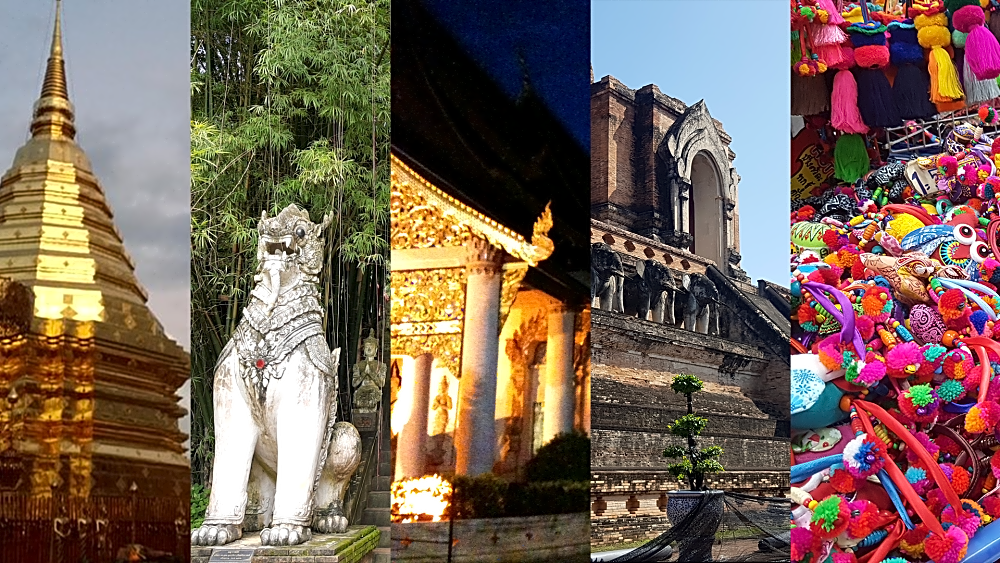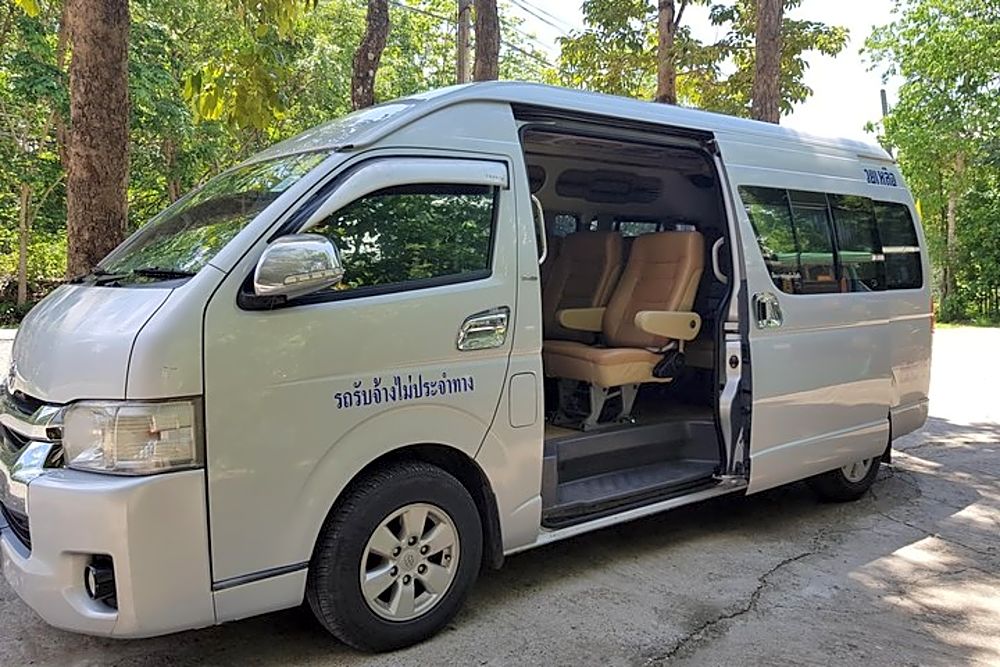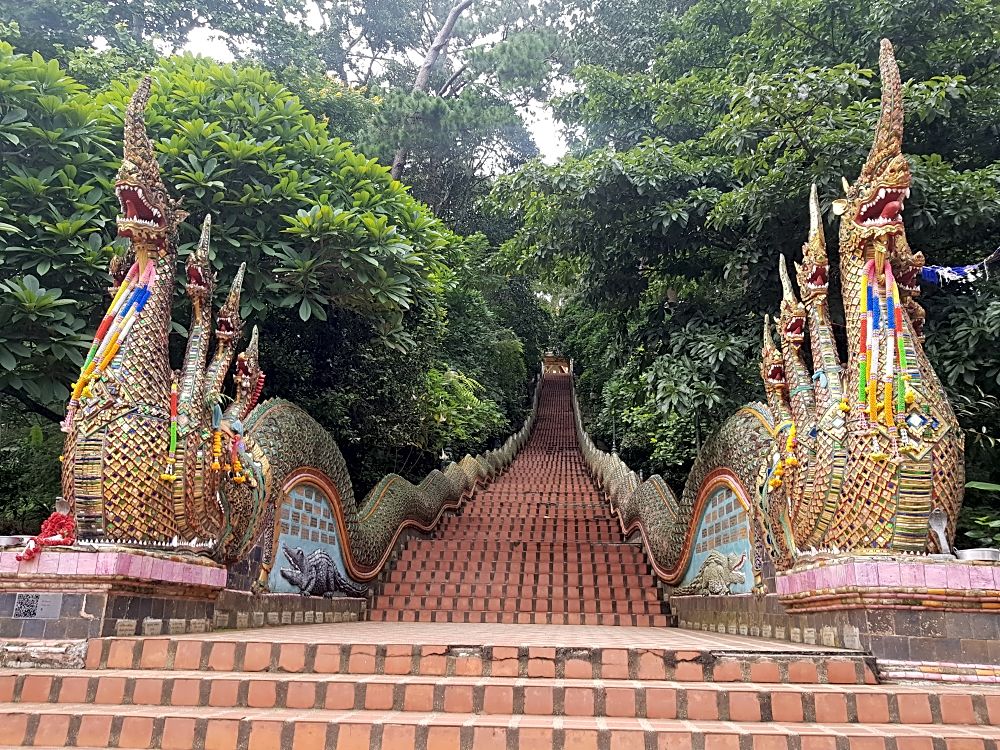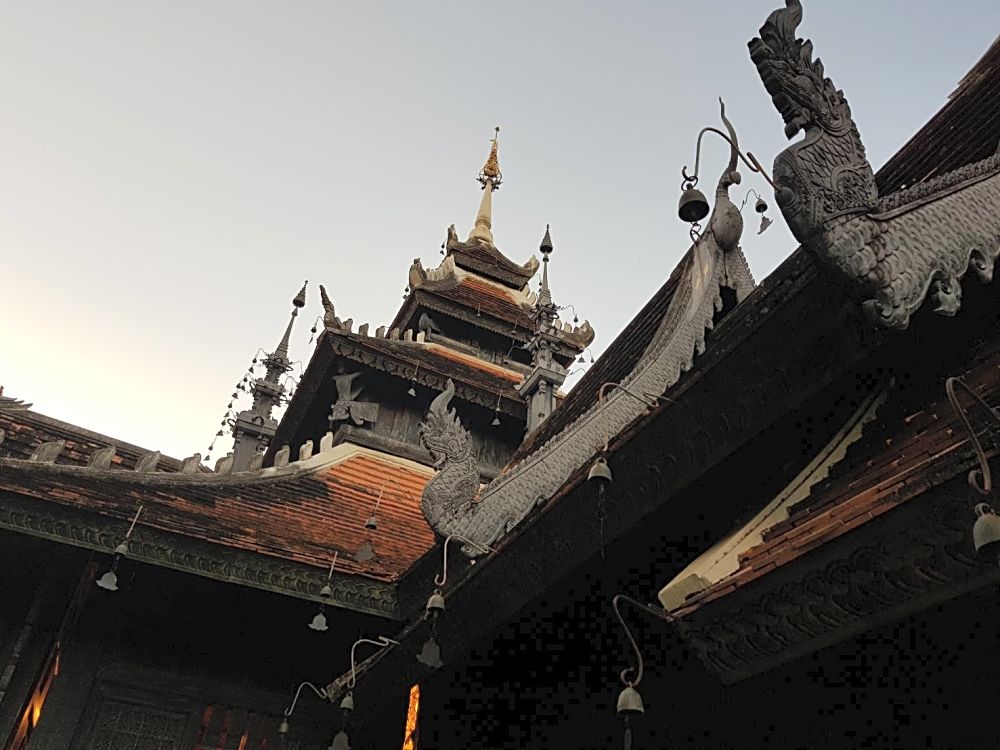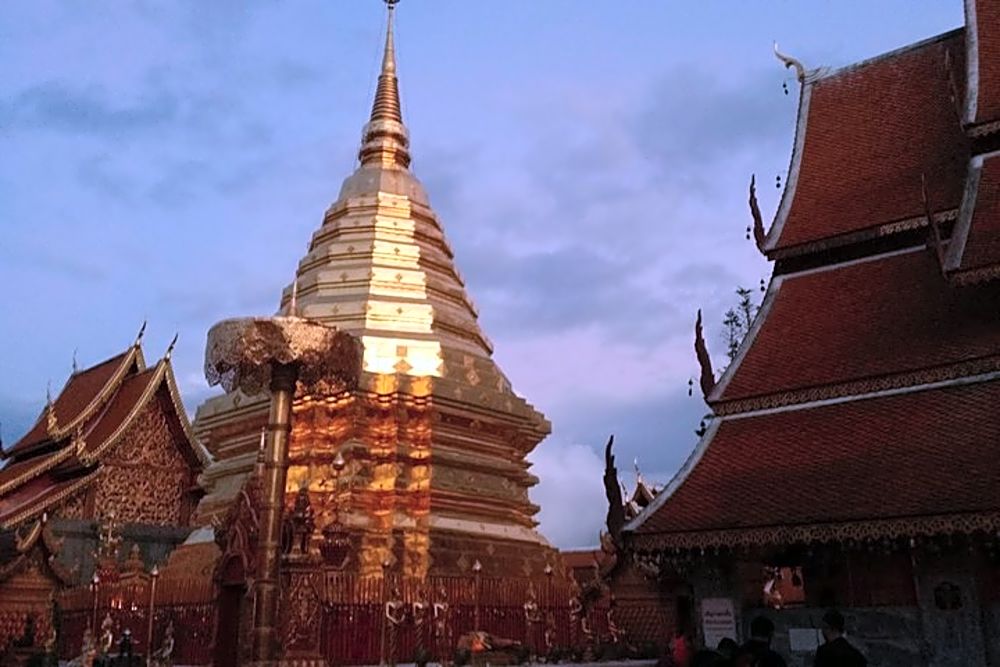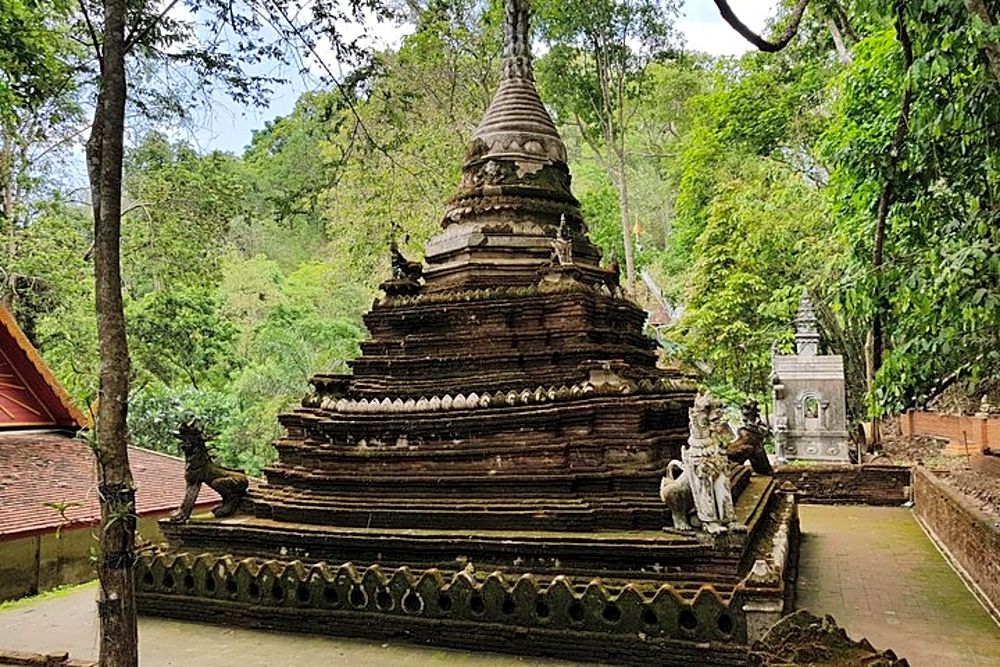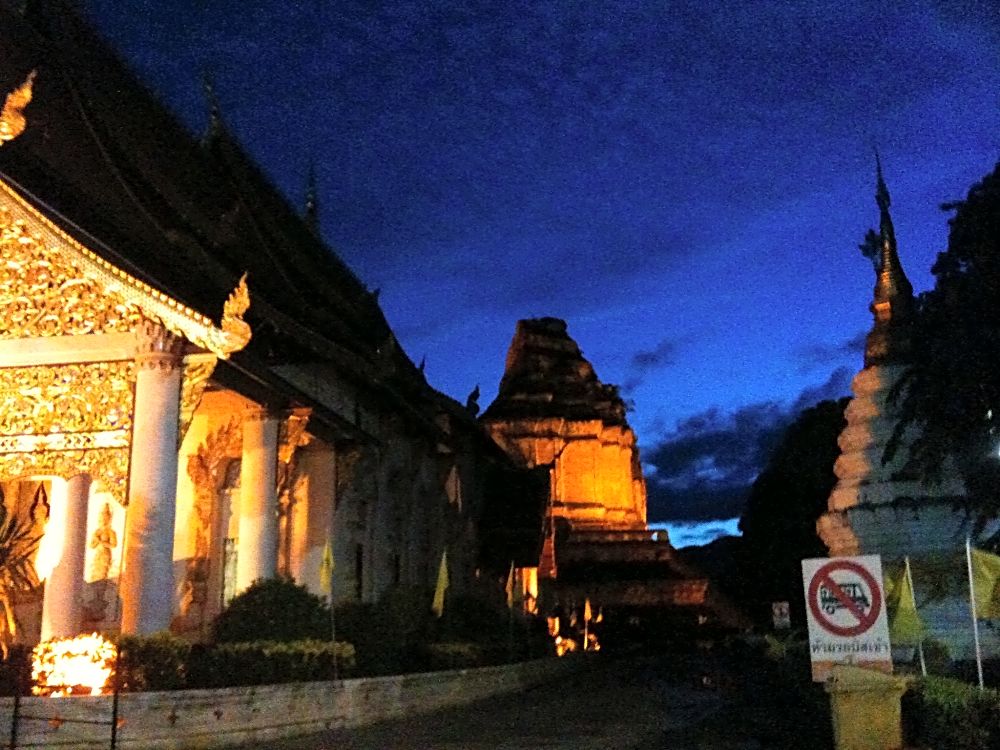Doi Suthep - Temple and City Tour
This excursion will take you to several temples popular with locals and tourists.
This excursion will take you to several temples popular with locals and tourists.
First, you’ll visit Wat Phra That. Also known as the Jungle Temple, it is a very peaceful place for meditating and relaxing. There are magnificent pagodas, beautiful statues, bells, a museum, and shrines. The temple also offers a panoramic breath-taking view of Chiang Mai. On a clear day, you will be able to enjoy an amazing view of the beautiful city and its surroundings.
Next, you’ll visit Wat Chedi Luang, one of Chiang Mai’s most prominent temples, located in the Old City. After a nice lunch, you will explore Wat Phra Singh, second to Wat Phra Tat in veneration.
Then, you’ll be driven to the famous Thapae Gate, which is popular with tourists, before adjourning to Warorot Market. This is called Kad Luang (big market) by the locals. It is a great place to shop as the items here are inexpensive.
Please remember to dress appropriately when you visit any temple in Thailand. Respectful behavior is also expected.
Itinerary:- Pick up from your hotel in an air-conditioned vehicle.
- Take a short 15 km drive to Doi Suthep. Along the way, your English-speaking guide will provide you with important information about the excursion and answer your questions.
- Visit Wat Pha That (Jungle Temple)
- Visit Wat Chedi Luang
- Lunch
- Visit Wat Phra Singh
- Thapae Gate and Warorot market
- Drop off at your hotel
- English-speaking tour guide.
- Private air-conditioned vehicle with driver.
- Bottled drinking water.
- Lunch.
- Travel insurance.
- Other tours not mentioned in the above itinerary.
- Personal expenses.
- Beverages.
Doi Suthep
Doi Suthep, together with Doi Pui, are twin peaks of a granite mountain, 15 kilometers (9.3 miles) west of Chiang Mai city. “Doi” means mountain in Thai. It is surrounded by mostly deciduous forest, with evergreen forest above this elevation. Hmong hill tribe people live in the surrounding area.
This mountain is part of the Doi Suthep-Pui National Park, which was established in 1981. It has an area of 261 square kilometers (101 sq mi). The park includes the Wat Phra That Doi Suthep temple and the Bhubing Rajanives Palace, further up the mountain. The top of the mountain offers panoramic views of Chiang Mai city and its surroundings.
When people mention the name Doi Suthep, they are usually referring to a Buddhist temple, Wat Phra That, which sits around 1,060 meters (3,480 ft) up the mountain.
Wat Phra That Doi Suthep
Wat Phra That is one of the most important temples in Chiang Mai. Situated 15 km (9.3 miles) from Chiang Mai city, the Theravada Buddhist temple is a sacred site for many Thai people. It is said that the temple was built by a Burmese architect and the first stupa was built in 1383. Over the years, the temple expanded with many more holy shrines built. In 1935, a road was constructed to provide easier access to the temple.
From the temple's base, visitors can climb 309 steps to reach the pagodas or take a tram. For the more adventurous, it's also possible to hike up to the temple from the city following the Monk's Trail.
The name of the temple, Wat Phra That, describes what you will find there. “Phra” refers to an honorific Buddha image, and “That” means a relic. “Phra That” therefore means that there is a relic of Buddha in the temple. In this case, it's a relic of half of Buddha's shoulder bone, which is found in the rounded portion of the Chedi.
The holiest structure on the temple grounds is the original gold plated chedi. Also found on the site are pagodas, statues, bells, a museum, and shrines. Many temples in Thailand display influences from both Buddhism and Hinduism. Here, there is a model of the Emerald Buddha and a statue of the Hindu God Ganesh.
The “naga” or dragon-lined steps are the longest naga balustrade in Thailand. Upon reaching the top of the steps, one will see the white elephant statue commemorating the story behind the Wat. The closest entrance to the inner ring can be found on the Northside of the complex. As you enter, the immediate view is the 24 meters (79 feet) high gold-plated chedi. This spire is typical of Northern Thailand’s chedis. The structure is greatly influenced by Sukhothai art except for the tiered “chatra” (umbrella) at the top, which was influenced by two centuries of Burmese occupation.
An aspect of Buddhist architecture is the tiered and angular-shaped chedi that is found all around Thailand. The tiers represent the level of heavens that one must ascend in order to achieve Nirvana. It also depicts the hierarchy associated with a monarchy. The main focus of Threvada Buddhism is to rid oneself of unwholesomeness. To achieve that one must focus on peace, lightness, and floating. This is why the architecture of the chedi was designed to create a feeling of weightlessness of the structure. The interior walls are filled with beautiful murals that depict the story of Buddha's life and travels. They also include Hindu aspects as well. The interiors at Wat Phra That Doi Suthep also contain myriads of Buddha statues that come in all different styles and materials, which can also be seen within the courtyard.
Wat Chedi Luang
Wat Chedi Luang is one of Chiang Mai’s most important temples. It is located within the ancient walled part of the city. Also known as “The temple of the Great Stupa”, it initially consisted of two more temples named Wat Ho Tham and Wat Sukmin that were later merged into one. It’s most prominent feature is the massive and very impressive chedi. It is 85 meters in height with a width of 44 meters. The chedi or pagoda was ordered to be constructed by King Saen Muang Ma to enshrine the ashes of his father. The construction which began in the late 14th century was completed in 1475. In the main sanctuary is Phra Chao Attarot, a revered standing Buddha statue flanked by two disciples. There is a huge reclining Buddha and a handsome seated Buddha on the grounds. There is a daily Monk Chat in English, where visitors can find out more about Thai culture and Buddhism.
Wat Phra Singh
Wat Phra Singh is the second most revered temple in Chiang Mai after Wat Phra That on Doi Suthep. It was constructed by King Pha Yu in the 14th century. It is located in the old city. Most prominent are its Lanna-style roofs and elegant assembly hall (“viharn”).
The viharn showcases murals depicting the lives of locals hundreds of years ago. It also houses the Phra Singh (Lion Buddha).
Warorot Market
Warorot Market is one of the oldest and most well-known markets in Chiang Mai. Known to the locals as Kad Luang, which means “big market”, it is a historical landmark. Visitors can find a variety of Chiang Mai food and products. The market houses various sections. A large section offers inexpensive goods, such as clothing, fashion accessories and personal care products. Other sections focus on Chiang Mai traditional accessories, locally handmade knick-knacks, and religious accessories. It is also a fresh market with meat and vegetables. On the outside, are fruit and flower stalls.
